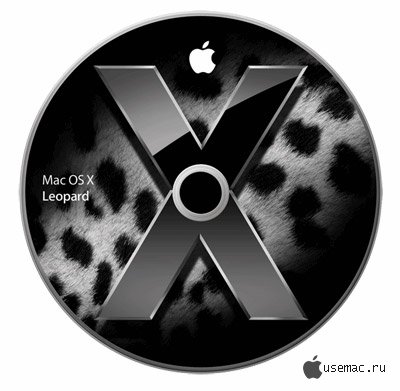Leopard installation experience

Exit Mac OS X Leopard - a significant event for each user of Apple computers and not only for them. Apple promised more than 300 innovations, predicting the revolutionary nature of its offspring. I will say in advance - the company kept all promises, having implemented the declared in full.
A couple of days before the official release on the well-known file-sharing services, the so-called “Gold Master” image of the system appeared, the one from which the blanks are stamped in the pre-sale time. Wanting to get the system as early as possible, put the torrent on the download.
The speed was far from desired, but, waking up on October 26, saw that the download was completed.
A small digression - friends, in no case do not urge you to do the same as me. If you have the opportunity - buy a box with Leopard , thus you will give yourself a lot of pleasure, and most importantly - become the owner of a licensed product.
The downloaded image was in the .dmg format, which somewhat put me in a stupor - my MacBook Pro belongs to the very first model line and is not able to write DVD-DL . In principle, this omission is not big, and I also think that writing DVDs on a slow laptop drive is one of those things that are done extremely rarely and are not particularly needed in everyday life. Since the computer playing the role of the “home media center” works under Windows XP , I had no choice but to convert dmg to iso and burn it to a regular double-layer DVD disc. Unfortunately, the most popular dmg2iso Windows script refused to work with the image (apparently the image size was too large - 6.66GB ), then I had to do a non-trivial operation. Connecting a MacBookPro via a network cable (because the LAN speed is higher than 802.11g ) to the home PC , opened the terminal and executed the command found on the macosxhints.com website, specifying the required parameters - input and output files on the PC . MacBook Pro has converted a dmg image to standard iso over a network.
hdiutil convert /path/to/filename.dmg -format UDTO -o /path/to/savefile.iso
The process took about half an hour, meanwhile giving me the opportunity to make breakfast. The resulting image was burned to DVD-DL using Nero Express at x16 speed.
There were some concerns about converting the image - I read the reviews a little earlier that the dmg boot partition is different from the iso drive, and that the disk does not roll when the Mac starts up from it. However, they passed when inserting a disc in a MacBook Pro and clicking in the " Restart and install Mac OS X Leopard " window that appeared, my book went into reboot. Due to the fact that the installation was called from Mac OS X Tiger , all data had to be saved. The installation of Leopard has begun. After choosing the system language (as expected, Russian is now officially supported at the system level), as well as the installation hard disk, the installation went at full speed. The process took almost an hour , which is long enough. I think that the installation time in my case can be explained by the preservation of all user data and parameters. Absolutely all the data has been preserved - programs, mailboxes, dock icons, documents, etc. Therefore, I was very pleased with the way the update was made.
I recently listened to the Radio-T podcast, so there the respected bobuk bobuk first made BackUp using third-party software, then put the system from scratch, and when I restored BackUp , I cursed that half of the programs did not work for him or the data was incorrectly restored. I chose the easiest installation path, “on top” of the Tiger, and did not lose.
The system has definitely pleased most of the time - from the speed of work to the updated user interface. I think that a small cycle of notes on impressions from working with Leopard will follow .
Source: usemac.ru
')
Source: https://habr.com/ru/post/15609/
All Articles